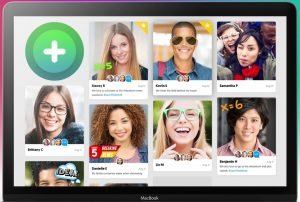A common criticism of educational theory is that it is often separated from practice. Educational technology tools are a strategic way to bridge the gap and design instruction centered around targeted learning theories. Flipgrid is a seamless and user-friendly tool that prides itself on building a student-centered community of learners. The basic premise of Flipgrid is that it gives teachers the power to create grids in which they or their students pose topics and other members of the class participate. There are powerful social learning features such as sharing, liking, and visual feedback for students. Flipgrid as a company loves to empower their users and is receptive to showcasing the tool in action. As can be evidenced through their dedication to accessibility, they go beyond lip service and design a technology that has the potential to provide truly transformative learning moments.
Applying Theory to Practice
Flipgrid is a flexible tool that could be used intentionally with different learning theories. At a high level, it fits into the social constructivist paradigm. Students are constructing their own understanding in a shared social setting. Going beyond the abstract, theories such as community of practice, problem-based learning, or social learning theory fit nicely as a design framework for Flipgrid. The actual learning theory used will depend on the design of the grid.
The underlying features of Flipgrid that make it an appropriate tool for these types of theories are the opportunity for students to contribute their own response, to reply to their peers’ post, to engage with content from within their normal communication channels, and to articulate their understanding. Students who would normally have reservations in participating in class now have a platform for their voice.
Fully Utilizing the Tool
The vast number of educational technology tools available for teachers is overwhelming. The supply is constantly changing and different solutions rise and fade in popularity. As educators know, it is not enough to simply learn about the tool. We need a chance to observe the tool in action, to trial it in low-risk environments, and to reflect on our use of the tool in a community of practice. EdTechGuides has a nice example of the Flipgrid tool in action.
In order to optimize use of Flipgrid you should experiment and participate in your own Flipgrids. This is what is known as the sandbox space. Get used to what features are available in different subscription plans and how this tool would work in your classroom setting. Flipgrid is able to integrate with your Learning Management System or website. The five major features of Flipgrid are the grids, topics, responses, replies, and feedback.
Grids: These are basically the home base for your classroom content. This is where students will go to view topics that have been posted and post their responses.
Topics: Topics are started with a video and text explanation. Topics can revolve around anything you are studying or discussing in class.
Responses: Students are able to respond to topics on a laptop or mobile device. They have the power to pause, record, delete, and flip their cameras in order to share their surroundings.
Replies: Students can post replies to other video postings. Entirely new discussions are fostered through threaded video responses.
Feedback: The feedback system allows for quick and rapid assessment through an emoticon rating scale. Advanced subscriptions also give the option for text feedback.
Check our our video for the theory behind Flipgrid and its features:




